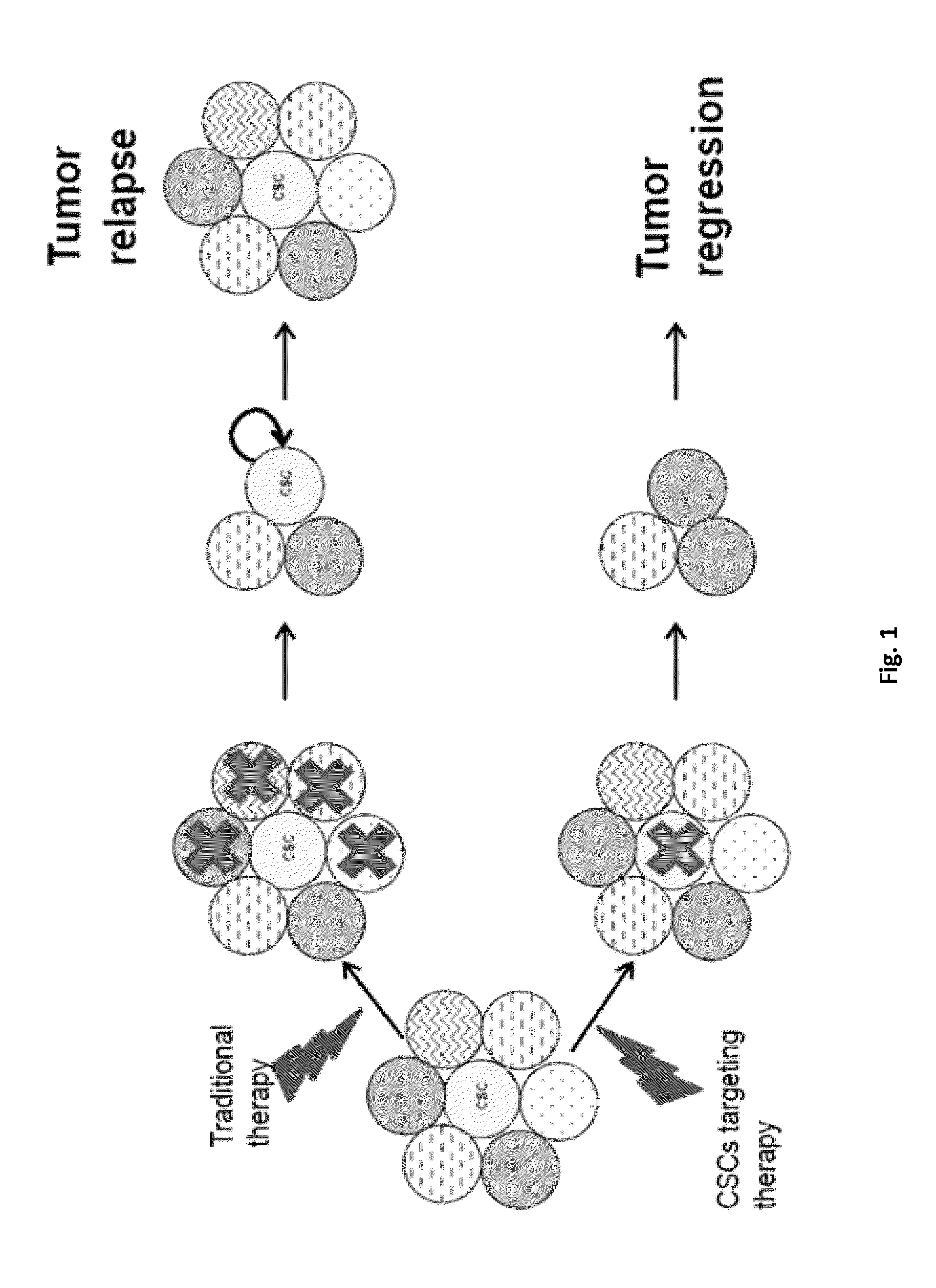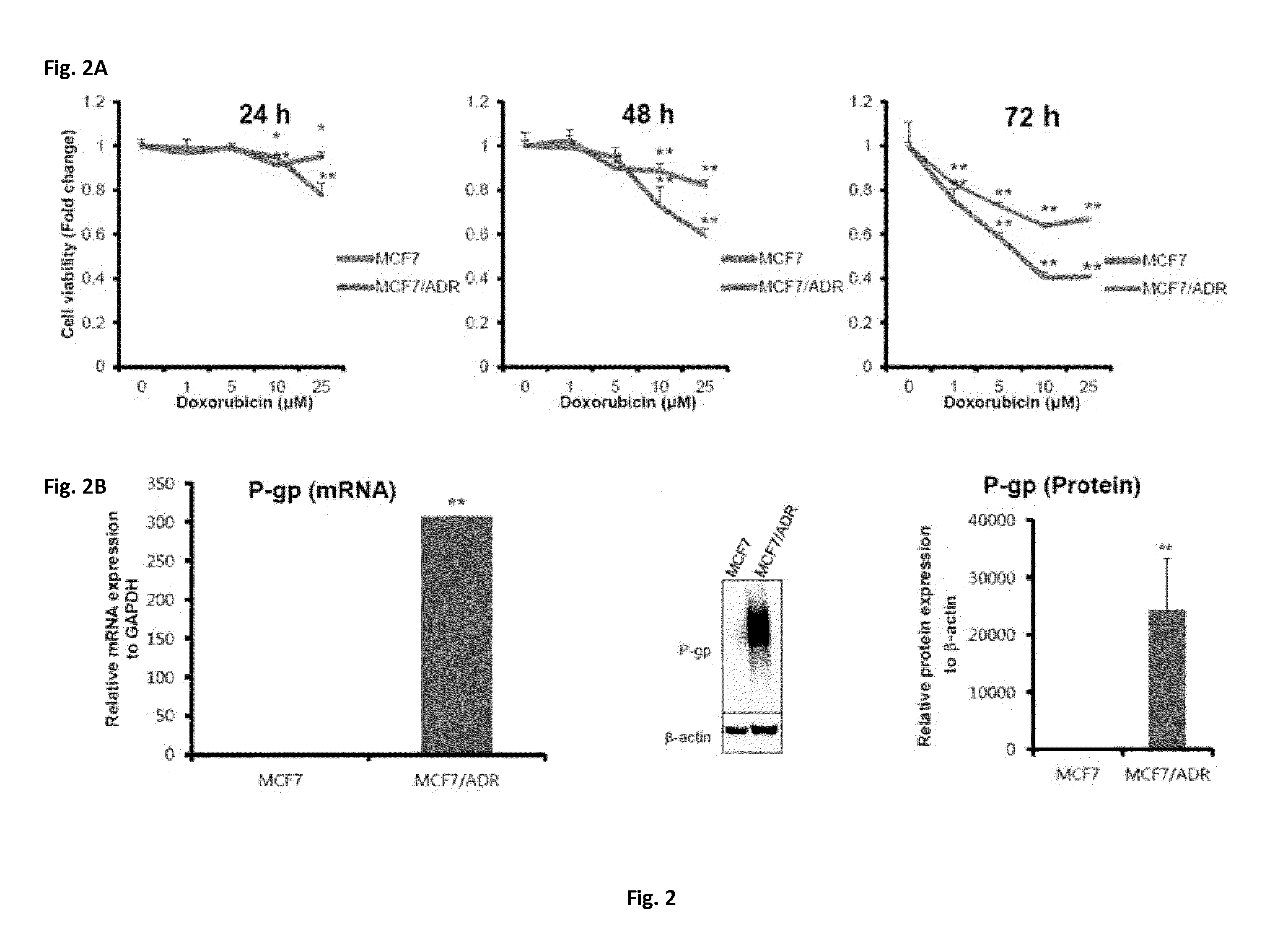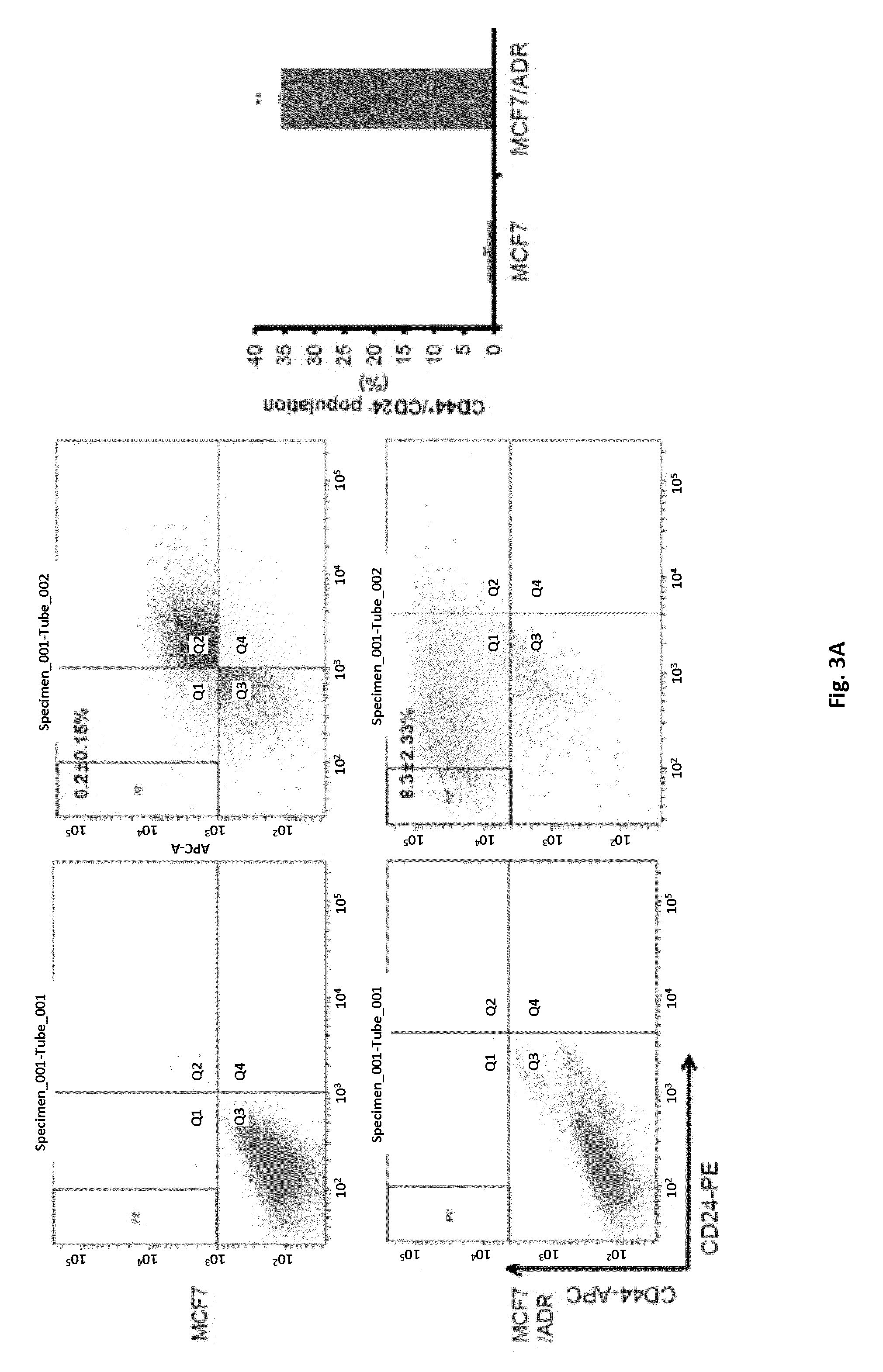Method For Treating Breast Cancer By Targeting Breast Cancer Stem Cell
a breast cancer and stem cell technology, applied in the field of breast cancer by targeting breast cancer stem cells, can solve the problems of drug use that may kill normal cells as well as cancer cells, the patient's health is not improved, and the cell resistance to chemical substances is not clear
- Summary
- Abstract
- Description
- Claims
- Application Information
AI Technical Summary
Benefits of technology
Problems solved by technology
Method used
Image
Examples
example 1
Experimental Method
[0061]1-1: Establishment of Drug-Resistant Breast Cancer Cell Line (MCF7 / ADR)
[0062]A human breast cancer maternal cell line, MCF-7 (Korean Cell Line Bank), was continuously exposed to 1 μM of a drug, doxorubicin (Sigma). In this case, the maternal cell line was cultured in a drug-free medium for at least one week to establish a breast cancer cell MCF7 / ADR having induced drug resistance. Here, the cell culture was performed at 37° C. and 5% CO2 in a DMEM medium (Hyclon, Logan, Utah) supplemented with 10% FBS and 1% penicillin.
[0063]1-2: MTT Assay: Analysis of Cell Viability
[0064]To evaluate cytotoxicity of the anti-cancer agent (doxorubicin), a cell viability assay was performed using an MTT assay. First, cells were plated on a 96-well plate at a density of 5×103 cells / well, treated with the drug, and then cultured for 24, 48, and 72 hours. Thereafter, each well was treated with 5 mg / ml of MTT (AMRESCO), and the cells were cultured at 37° C. for 4 hours. Each well ...
example 2
Determination of Drug Resistance Characteristics of MCF7 / ADR Breast Cancer Cells
[0085]To determine whether the MCF7 / ADR cells had drug resistance against the doxorubicin anti-cancer agent, a time-dependent, dose-dependent MTT assay was performed on human luminal breast cancer cells MCF7, and MCF7 / ADR cells having resistance to doxorubicin.
[0086]After 24, 48, and 72 hours when the MCF7 and MCF7 / ADR cells were treated with doxorubicin (0, 1, 2, 10, and 25 μM), the cell viabilities were determined. As a result, it was revealed that the MCF7 / ADR cells had higher cell viability against doxorubicin than the MCF7 cells, as shown in FIG. 2A.
[0087]Since P-glycoprotein (P-gp) is known to be a marker for breast cancer having resistance to doxorubicin, expression levels of mRNAs and proteins were determined using qRT-PCR and a western blot assay so as to examine whether P-gp was overexpressed in the MCF7 / ADR cells.
[0088]As a result, it was revealed that the MCF7 / ADR cells had higher P-gp mRNA a...
example 3
Determination of Presence of Cancer Stem Cells in Drug-Resistant MCF7 / ADR Breast Cancer Cells
[0089]3-1. Marker (CD44+ / CD24− or ALDH+) of Breast Cancer Stem Cells
[0090]Since a breast cancer stem cell-specific surface antigen, CD44+ / CD24−, and a marker enzyme, aldehyde dehydrogenase (ALDH+), were known to be markers of the breast cancer stem cells, a CD44 / CD24 assay and an ALDEFLOUR assay were performed to determine whether the MCF7 / ADR cells having the drug resistance had a population of cancer stem cells.
[0091]As a result, it was revealed that the CD44+ / CD24− population of the MCF7 cells amounted to approximately 0.2%, but the CD44+ / CD24− population of the MCF7 / ADR cells increased to approximately 8.3%, as shown in FIG. 3A. Also, it was revealed that the ALDH+ population of the MCF7 cells amounted to approximately 0.7%, but the ALDH+ population of the MCF7 / ADR cells increased to approximately 3.6%, as shown in FIG. 3B.
[0092]Therefore, it could be seen that the maternal MCF7 cells ha...
PUM
 Login to View More
Login to View More Abstract
Description
Claims
Application Information
 Login to View More
Login to View More - R&D
- Intellectual Property
- Life Sciences
- Materials
- Tech Scout
- Unparalleled Data Quality
- Higher Quality Content
- 60% Fewer Hallucinations
Browse by: Latest US Patents, China's latest patents, Technical Efficacy Thesaurus, Application Domain, Technology Topic, Popular Technical Reports.
© 2025 PatSnap. All rights reserved.Legal|Privacy policy|Modern Slavery Act Transparency Statement|Sitemap|About US| Contact US: help@patsnap.com



